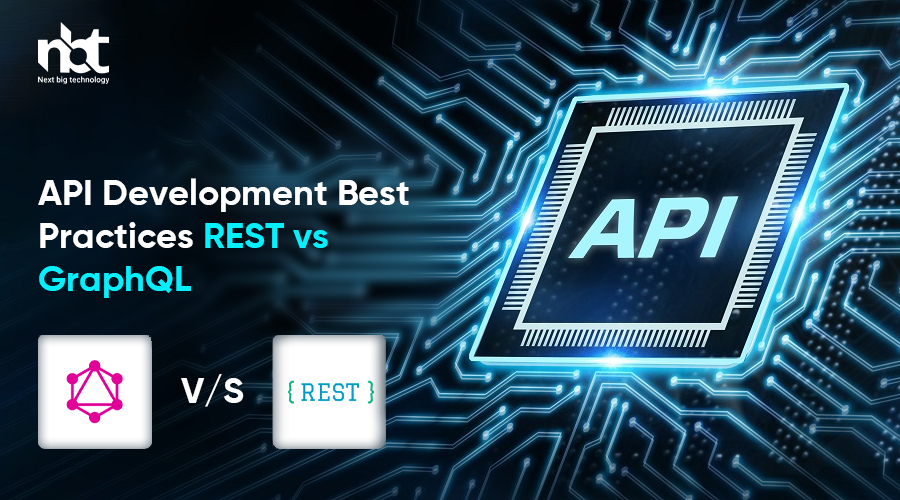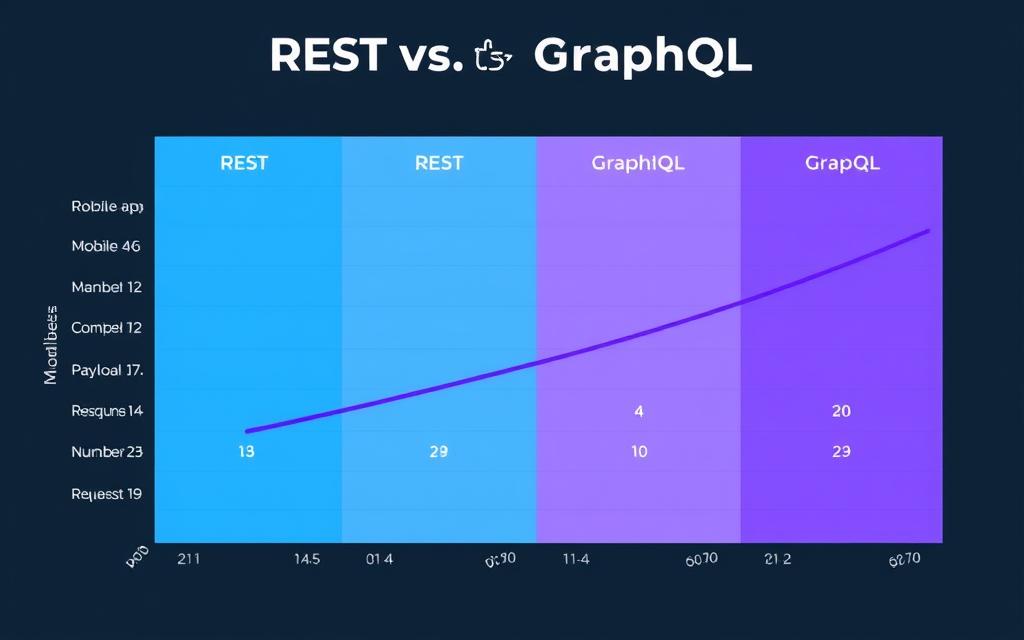Table of Contents
Understanding the Core Concepts
What is REST?
REST (Representational State Transfer) is an architectural style that defines a set of constraints for creating web services. Developed by Roy Fielding in 2000, REST has become the standard for API development due to its simplicity and alignment with HTTP protocols.
REST APIs use standard HTTP methods (GET, POST, PUT, DELETE) to perform operations on resources, each identified by a unique URL. This resource-centric approach makes REST intuitive and easy to implement for teams familiar with web technologies.
What is GraphQL?
GraphQL is a query language and runtime for APIs developed by Facebook in 2015. Unlike REST, GraphQL provides a single endpoint where clients can request exactly the data they need, reducing over-fetching and under-fetching problems common in REST implementations.
With GraphQL, clients define the structure of the response, allowing for more flexible and efficient data retrieval. This client-driven approach gives frontend developers more control while reducing the number of network requests needed.
Performance Comparison: REST vs GraphQL
Performance differences between REST and GraphQL are context-dependent and influenced by factors like network conditions, data complexity, and implementation details.
| Performance Factor | REST | GraphQL |
| Network Requests | Multiple requests to different endpoints | Single request to one endpoint |
| Data Transfer | Potential over-fetching (returns all fields) | Precise data selection (returns only requested fields) |
| Mobile Performance | Less efficient with unstable connections | Better for limited bandwidth scenarios |
| Caching | Built-in HTTP caching | Requires custom implementation |
| Server Load | Predictable and controllable | Can be unpredictable with complex queries |
“The performance advantage of GraphQL becomes more pronounced as the complexity of data requirements increases and network conditions deteriorate.”
7 Key Factors to Consider When Choosing
1. Data Fetching Efficiency
REST Approach
REST APIs often struggle with two common issues:
- Over-fetching: Receiving more data than needed
- Under-fetching: Requiring multiple requests to get complete data
GraphQL Approach
GraphQL addresses these efficiency issues by:
- Allowing clients to specify exactly what data they need
- Enabling retrieval of multiple resources in a single request
- Eliminating unnecessary data transfer
2. Versioning Approaches
API versioning strategies differ significantly between REST and GraphQL:
REST Versioning
- Explicit versioning in URL path (/v1/users)
- Version in headers (Accept: application/vnd.api+json;version=1.0)
- Query parameters (?version=1)
- Requires maintaining multiple API versions simultaneously
GraphQL Versioning
- Schema evolution rather than versioning
- Deprecation of fields rather than entire endpoints
- Gradual transitions with backward compatibility
- Reduced maintenance overhead for multiple versions
3. Error Handling Patterns
REST Error Handling
REST uses HTTP status codes to indicate errors:
- 4xx codes for client errors
- 5xx codes for server errors
- Standardized error responses with JSON bodies
- Clear separation between successful and failed requests
GraphQL Error Handling
GraphQL returns 200 OK status codes with error objects:
- Partial success is possible (some data + errors)
- Errors returned alongside successful data
- More detailed error information with locations and paths
- Requires client-side error handling logic
4. Caching Mechanisms
REST Caching
- Leverages HTTP caching headers (ETag, Cache-Control)
- CDN-friendly with URL-based caching
- Browser and proxy caching support
- Well-established patterns and tools
GraphQL Caching
- Requires application-level caching
- Tools like Apollo Client provide normalized caching
- Cache identifiers and policies needed
- More complex implementation but potentially more precise
5. Documentation Requirements
REST Documentation
- Requires external tools like Swagger/OpenAPI
- Manual documentation often needed
- Documentation can become outdated
- Separate process from implementation
GraphQL Documentation
- Self-documenting schema with introspection
- Tools like GraphiQL for interactive exploration
- Documentation generated from code
- Always in sync with implementation
6. Learning Curve
REST Learning Curve
- Familiar to most web developers
- Based on HTTP concepts
- Simpler initial implementation
- Challenges with complex data relationships
GraphQL Learning Curve
- New concepts (schema, resolvers, types)
- Different mental model for API design
- More complex server setup
- Powerful but requires investment to master
7. Ecosystem Maturity
REST Ecosystem
- Mature with decades of development
- Extensive tooling across all languages
- Well-established best practices
- Broad industry adoption
GraphQL Ecosystem
- Rapidly growing ecosystem
- Strong JavaScript/TypeScript support
- Evolving best practices
- Increasing adoption in modern applications
Get Our Complete API Technology Comparison Guide
Dive deeper into the technical details with our comprehensive guide that includes performance benchmarks, code examples, and migration strategies.
Decision-Making Framework: 5 Real-World Scenarios
Let’s analyze how REST and GraphQL perform in specific real-world scenarios to help you make the right choice for your project.
Scenario 1: Mobile App with Unstable Connectivity
GraphQL Advantages
- Reduced payload size with precise data selection
- Fewer network requests minimize reconnection issues
- Better offline support with normalized caching
- Adaptable queries based on connection quality
REST Challenges
- Multiple requests increase failure points
- Larger payloads consume more bandwidth
- All-or-nothing responses for each endpoint
- More complex retry logic needed
Recommendation: GraphQL is generally superior for mobile applications with unstable connectivity due to its ability to minimize network requests and precisely control data transfer size.
Scenario 2: Complex Analytics Dashboard
GraphQL Advantages
- Single request for multiple data sources
- Client-specific data requirements for each widget
- Parallel resolution of multiple data sources
- Reduced frontend complexity
REST Challenges
- Waterfall of dependent API calls
- Complex data aggregation on client side
- Increased total loading time
- More error handling scenarios
Recommendation: GraphQL excels for complex dashboards by reducing the number of network requests and simplifying client-side data aggregation logic.
Scenario 3: Microservices Architecture
REST Advantages
- Service independence and isolation
- Simpler per-service implementation
- Clear service boundaries
- Independent scaling of services
GraphQL Challenges
- Schema stitching complexity
- Performance bottlenecks at gateway
- Cross-service resolver dependencies
- Potential single point of failure
Recommendation: A hybrid approach often works best—REST between microservices with a GraphQL gateway for client applications to provide flexibility while maintaining service independence.
Scenario 4: Public API for Third-Party Developers
REST Advantages
- Familiar to most developers
- Easier to implement rate limiting
- Simpler security model
- Better caching for public consumption
GraphQL Challenges
- Complex query cost analysis
- Potential for abusive queries
- Higher learning curve for consumers
- More complex security considerations
Recommendation: REST is often more appropriate for public APIs due to its familiarity, simpler security model, and established patterns for rate limiting and caching.
Scenario 5: Rapid Prototyping Project
GraphQL Advantages
- Frontend changes without backend modifications
- Faster iteration cycles
- Self-documenting schema
- Flexible data requirements as UI evolves
REST Challenges
- New endpoints needed for UI changes
- Backend-frontend coupling slows iteration
- More coordination between teams
- Endpoint proliferation as requirements change
Recommendation: GraphQL provides significant advantages for rapid prototyping by decoupling frontend development from backend changes, allowing faster iterations.
Best Practice Checklists
REST Best Practices
- Use proper HTTP methods (GET, POST, PUT, DELETE) semantically
- Implement consistent resource naming conventions
- Return appropriate status codes (2xx, 4xx, 5xx)
- Include HATEOAS links for discoverability
- Implement proper pagination with limit and offset
- Use query parameters for filtering and sorting
- Implement proper error responses with details
- Use HTTP caching headers effectively
- Version your API appropriately
- Document all endpoints comprehensively
GraphQL Best Practices
- Implement query depth limiting to prevent abuse
- Use persisted queries for production
- Implement proper error handling and formatting
- Design an efficient schema with proper types
- Use dataloaders for batching and caching
- Implement proper authentication and authorization
- Monitor and log query performance
- Implement query complexity analysis
- Use fragments for reusable query components
- Document schema with descriptions
Get Our API Implementation Checklists
Download our detailed checklists for implementing REST and GraphQL APIs according to industry best practices.
Popular Tools and Frameworks
| Category | REST Tools | GraphQL Tools |
| Server Frameworks | Express.js, Spring Boot, Django REST, FastAPI | Apollo Server, GraphQL Yoga, Hasura, Nexus |
| Client Libraries | Axios, Fetch API, Retrofit, RestTemplate | Apollo Client, Relay, urql, GraphQL Request |
| Documentation | Swagger/OpenAPI, Postman, Redoc | GraphiQL, GraphQL Playground, Voyager |
| Testing | Postman, REST Assured, Supertest | Apollo DevTools, GraphQL Testing Library |
| Monitoring | New Relic, Datadog, Prometheus | Apollo Studio, GraphQL Inspector, Datadog |
Conclusion: Making the Right Choice
The choice between REST and GraphQL should be guided by your specific project requirements, team expertise, and long-term maintenance considerations. Here are our actionable recommendations:
Choose REST when:
- Your team has strong REST expertise
- You need maximum compatibility with existing systems
- HTTP caching is critical for performance
- You’re building a public API for wide consumption
- Your data relationships are relatively simple
- You need the most mature ecosystem of tools
Choose GraphQL when:
- You have complex, nested data requirements
- Your clients need precise control over data fetching
- You’re building mobile apps with bandwidth constraints
- Your UI is evolving rapidly and needs flexibility
- You want to aggregate data from multiple services
- You need strong typing and self-documenting APIs
Remember that these technologies aren’t mutually exclusive. Many successful systems use both REST and GraphQL to leverage the strengths of each approach where appropriate.
Get Our Complete REST vs GraphQL Decision Framework
Download our comprehensive decision framework with detailed evaluation criteria, scoring templates, and implementation roadmaps for both REST and GraphQL.














